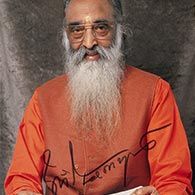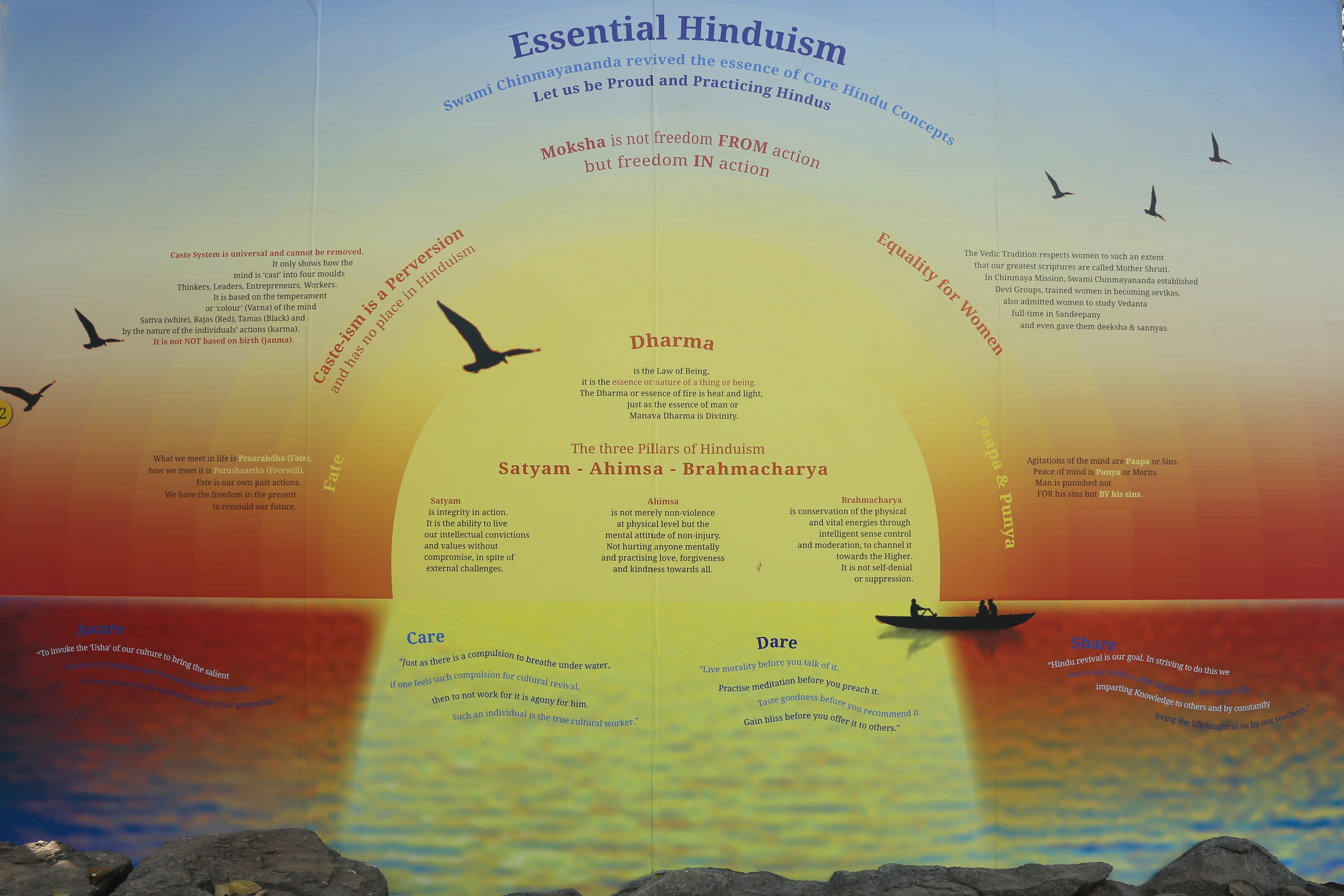Some of the fundamental concepts of Hinduism which went through deterioration and caused confusion, sorrow and suffering, were restored by Swami Chinmayananda to its original intent and also adapted to modern times.
Caste System, the 3 Pillars of Hinduism - Satyam, Ahimsa, Brahmacarya, Fate or Destiny, Dharma, Equality for women, Paapa & Punaya, Moksha are presented here as Swami Chinmayananda restored them to their original intent. Knowing these, we can be proud and practicing Hindus.
You can also get more details through Swami Chinmayananda’s Videos about some of these concepts.
More Info
Hinduism is a subjective science and Rishis are Subjective scientists. It is not a bundle of superstitions. Knowing the reasoning & depth of the following ideas, we can be proud and practicing Hindus:
Caste System
Caste-ism is a perversion & has no place in Hinduism.
Caste System is universal and cannot be removed. Caste only shows how the mind is ‘cast’ into four moulds – Thinkers, Leaders, Entrepreneurs, Workers. It is based on the temperament or ‘colour’ (Varna) of the mind – Sattva (white), Rajas(Red), Tamas (Black) and on the nature of the individuals’ actions (karma). It is NOT based on birth (janma).
Satyam Ahimsa Brahmacharya
These are three Main Pillars of Hinduism.
Satyam is integrity in action. It is the ability to live our intellectual convictions and values without compromise, in spite of external challenges.
Ahimsa is not merely non-violence at physical level but the mental attitude of non-injury. Not hurting anyone mentally and practising love, forgiveness and kindness towards all.
Brahmacharya is conservation of the physical and vital energies through intelligent sense control and moderation, to channel it towards the Higher. It is not self-denial or suppression.
Fate or Destiny
What we meet in life is Praarabdha (Fate), how we meet it is Purushaartha (Freewill). Fate is our own past actions. We have the freedom in the present to remould our future. Fate or Destiny is not written by God and we are not mere helpless victims of His Play.
Dharma
Dharma is the Law of Being. That nature which makes a thing what it is, is called its Dharma. Fire’s dharma is heat & light. Hinduism insists on the Manava Dharma meaning human beings should be true to their own essential nature which is Divine and not plod on through life like helpless creatures.
Equality for Women
The Vedic Tradition respects women to such an extent that our greatest scriptures are called Mother Shruti. In Chinmaya Mission Swami Chinmayananda established Devi Groups, trained women in becoming sevikas, also admitted women to study Vedanta full-time in Sandeepany and even gave them deeksha & sannyas.
Paapa & Punya, Lokas & Moksha
Agitations of the mind are Paapa or Sins. Peace of mind is Punya or Merits. Man is punished, not FOR his sins but BY his sins. Lokas or 14 worlds are Realms of experiences for a soul after dropping the body. Like the world of doctors, engineers etc. They are not geographical locations. Same way Hinduism speaks about 7 higher & 7 lower realms of experiences for the individual who has dropped the body. Moksha is not freedom From actions but freedom In Actions.
4 Steps in Cultural Revival
Values of the culture and external expression – both need to be preserved and revived. External expression may change with time and that shows the adaptability of the culture. But values are universal and applicable eternally.
How can a culture be revived? By letting the knowledge of its essence and relevance be gained, lived and shared. Dharma samsthapana happens not by starting a new religion or converting. It happens by knowledge-sharing and by creating opportunities to practice the external expression knowing its deeper significance.
Creating opportunities for people to gain knowledge, share knowledge and practice knowledge is the way to revive a culture.
Swami Chinmayananda followed four steps in Cultural Revival:
1. Aware – let people become aware of the glory of the culture.
2. Care – People will care once they are aware. They will feel for the culture and put efforts to protect it.
3. Dare – People will dare to live the culture when they know its significance. They will boldly call themselves as proud and practicing Hindus.
4. Share – Once people gain this knowledge, they will share and support the cultural awakening.
Swami Chinmayananda revived the essence of Core Hindu Concepts.
Let us be Proud and Practicing Hindus
To your right is a Lotus pond, a symbol of detachment and beauty.
Design Notes
Essential Hinduism
This panel created using ceramic tiles represents the reinterpretation of Core Hindu Concepts by Swami Chinmayananda. Just like the sun that casts the light of truth, the true meaning of Hinduism is depicted by a sunrise over the river Ganga that casts its light on Hinduism.



